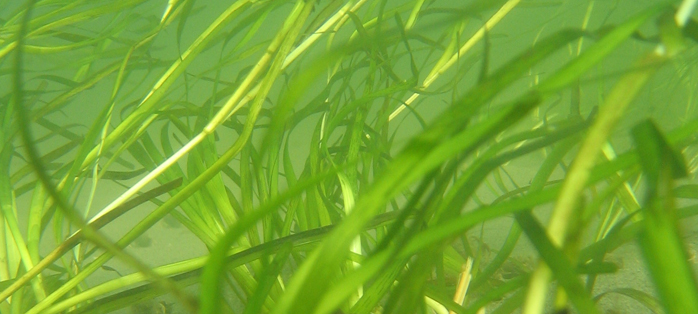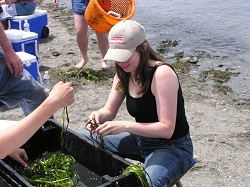EELGRASS RESTORATION
Zostera marina, commonly known as eelgrass, is the primary seagrass species found in Rhode Island. Eelgrass is a flowering underwater plant with meadows growing at depths of 3 to 12 feet in Narragansett Bay and the coastal ponds.

The growth and survival of eelgrass is dependent upon clear water to provide light for photosynthesis. Eelgrass beds are a primary source of food and shelter to an abundance of marine life, including economically important finfish and shellfish, such as the Bay scallop. Eelgrass also protects the shoreline by dampening wave energy and reducing erosion. It is widely recognized that the vitality of an estuary’s eelgrass beds is an indicator of its health. Narragansett Bay was once teeming with eelgrass. Today, it has lost 90 percent of its eelgrass beds.

Factors in eelgrass bed loss
- Pollution from sewage and fertilizers
- Digging and raking for shellfish
- Boat anchors and propellers that dredge up the bottom
- Warming water temperatures
- Rising sea levels associated with climate change
- “Wasting disease” caused by a slime mold
Eelgrass Restoration
With the support of hundreds of volunteers, the restoration program has transplanted eelgrass to areas of the Bay where it was found historically, and has refined harvest and transplant techniques that restore eelgrass without impacting natural donor beds.The next phase of our restoration efforts will include advocacy to support the necessary water quality improvements to allow eelgrass to survive in the mid and upper Bay and test transplants to assess the effects of those improvements.
Resources
Eelgrass Restoration Fact Sheet
Report: 2012 Mapping Submerged Aquatic Vegetation (SAV) in Rhode Island Coastal Waters





